집을 운영하기에 충분한 10kW 배터리입니다?
가정 에너지 저장을 탐색 할 때, 첫 번째 질문 중 하나는 항상 크기와 용량에 관한 것입니다.. 당신은 "10kw와 같은 숫자를 볼 수 있습니다" 그리고 궁금합니다, "정전 중에 내 집을 운영하기에 충분합니까??" 중요한 질문입니다, 그리고 대답은 당신이 힘을 얻고 싶은 것과 얼마나 오랫동안.
첫 번째, 핵심 용어를 명확히하겠습니다. 배터리의 전원은 킬로와트에 있습니다 (kW), 그러나 에너지 저장 용량은 킬로와트시입니다 (kWh). 사람들이 "10kW 배터리"에 대해 물어 보면" 런타임, 그들은 거의 항상 10kWh 배터리를 의미합니다. 10kWh 배터리는 종종 주택의 필수 부하를 실행하기에 충분합니다., 냉장고, 인터넷 - 몇 시간 또는 밤새. 하지만, 일반적으로 집 전체를 운영하는 것만으로는 충분하지 않습니다., 특히 고출력 에어컨과 같은 무거운 하중이 있습니다, 오랜 기간 동안.
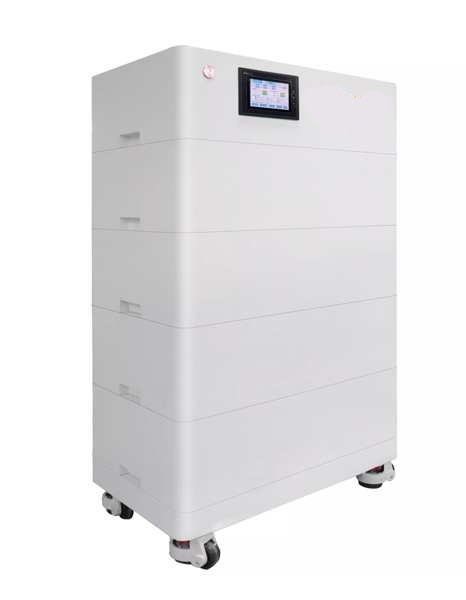
~에 Gycx 솔라, 우리는 설계를 전문으로합니다 쌓을 수 있는 가정용 배터리 고객의 요구에 맞는 시스템, 태풍 중에 필수 백업을위한 것인지 또는 태양 에너지 절약을 극대화하는지 여부. 자세한 내용을 살펴 보겠습니다.
쌓인 배터리는 무엇입니까??
종종 "Stacked라고하는 현대적인 에너지 저장 솔루션을들을 수 있습니다." 또는 "쌓을 수 있습니다" 배터리. 이것이 무엇을 의미합니까?, 그리고 그것은 단일과 어떻게 다른가요?, 독립형 배터리?
쌓인 배터리, 또는 "쌓을 수있는 배터리," 모듈 식 에너지 저장 장치는 물리적으로 함께 배치되고 더 큰 것을 형성하도록 전기적으로 상호 연결되도록 특별히 설계됩니다., 통합 배터리 뱅크. 각 모듈은 자체 포함 배터리입니다 (자체 BMS와 함께 안전한 LFP 리튬 화학을 사용하는 경우) 그것은 빌딩 블록 역할을합니다. 이 디자인은 더 많은 모듈을 추가하여 시스템 용량을 쉽게 확장 할 수 있습니다., 맞춤형 및 미래 방지 에너지 솔루션 생성.
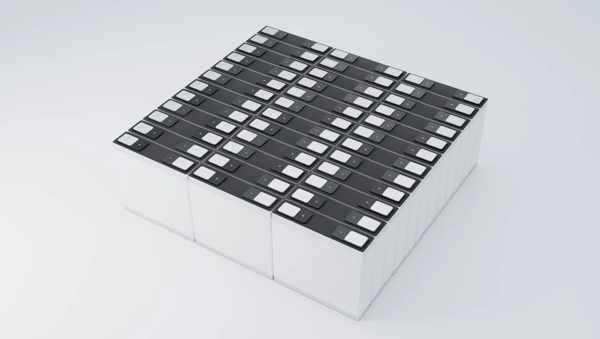
더 깊이 다이빙하십시오: 모듈 식 디자인의 힘
a의 개념 쌓을 수 있는 가정용 배터리 몇 가지 주요 원칙을 기반으로 구축됩니다:
- 모듈성: 각 배터리 장치는 표준화 된 모듈입니다 (예를 들어, 5kWh). 이를 통해 지금 필요한 용량부터 시작하여 나중에 더 추가 할 수 있습니다..
- 확장성: 이것이 주요 이점입니다. 앞으로 전기 자동차를 구입하는 경우, 전체 시스템을 교체하는 대신 스택에 다른 배터리 모듈을 추가 할 수 있습니다..
- 안전을 위해 설계되었습니다: 이 모듈은 안전한 물리적 스태킹을위한 기능으로 설계되었습니다. (연동 케이싱 또는 랙 장착처럼) 안전한 전기 연결을 위해 터미널을 보호했습니다.
- 스마트 통합: 각 모듈에는 자체 배터리 관리 시스템이 있습니다 (비엠에스), 그리고 그들은 서로 통신하도록 설계되었습니다., 지능적인, 그리고 매우 효율적인 배터리 뱅크.
이 접근법, 우리는 GYCX Solar에서 사용합니다, 고객에게 에너지 독립성을 향한 유연하고 비용 효율적인 경로를 고객에게 제공합니다..
15kWh 배터리는 얼마나 오래 지속됩니까??
런타임 이해는 배터리 크기를 조정하는 데 핵심입니다. 10kWh 배터리가 집 전체에 충분하지 않은 경우, 더 큰 15kWh 배터리가 당신에게 얼마나 더 많은 시간을 보낼 수 있습니까??
ㅏ 15KWH 배터리 저장소 50% 10kWh 배터리보다 더 많은 에너지, 그래서 그것은 지속될 것입니다 50% 더 길게 동일한 가구 부하에 전원을 공급하는 동안. 예를 들어, 필수 가전 제품 수집 인 경우 500 와트는 약 10kWh 배터리를 배출합니다 20 시간, 동일한 하중은 대략 15kWh 배터리로 구동됩니다. 30 시간.
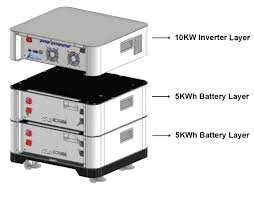
더 깊이 다이빙하십시오: 실용적인 런타임 비교
한국의 일반적인 가계 부하와 함께 수학을 살펴 보겠습니다.:
공식: 실행 시간 (시간) = 배터리 용량 (WH) / 짐 (와트에서)
- 10kWh 배터리 = 10,000 와트시
- 15kWh 배터리 = 15,000 와트시
| 대본 | 평균 부하 | 10KWH 배터리 런타임 | 15KWH 배터리 런타임 |
|---|---|---|---|
| 필수품 만 (냉장고, 등, Wi-Fi, TV) | 500 와트 | ~ 20 시간 | ~ 30 시간 |
| 적당한 사용 (골자 + 밥솥, 데스크탑 PC) | 1,500 와트 | ~ 6.7 시간 | ~ 10 시간 |
| 무거운 사용 (골자 + 단일 객실 에어컨) | 2,500 와트 | ~ 4 시간 | ~ 6 시간 |
보시다시피, 15kWh 시스템에서 5kWh의 용량은 큰 차이를 만듭니다.. 더운 여름 밤 중단 동안 편안한 시간 동안 에어컨을 운영하는 데 필요한 마진 일 수 있습니다.. 사이징 a 쌓을 수 있는 가정용 배터리 시스템은 쉽습니다 - 하나 더 모듈을 추가하는 것만 큼 간단합니다..
파워 스택 배터리는 그만한 가치가 있습니다?
모듈 식에 투자하고 있습니다, 쌓을 수있는 배터리 시스템 - "파워 스택" - 현명한 재무 결정? 이 확장 가능한 백업 파워와 태양 저장 공간을 갖는 이점은 비용을 정당화합니다.?
예, 대부분의 주택 소유자에게, 쌓을 수있는 배터리 시스템은 훌륭한 투자입니다. 값은 세 가지 주요 영역에서 나옵니다:
- 금융 저축: 피크 속도 저녁 시간 동안 사용할 과도한 태양 에너지를 저장함으로써, Kepco와 같은 제공 업체의 전기 요금을 크게 줄일 수 있습니다..
- 에너지 안보: 태풍이나 기타 그리드 문제로 인한 정전 중에 귀중한 마음의 평화와 원활한 백업력을 제공합니다..
- 미래 방지 유연성: 나중에 더 많은 용량을 추가 할 수있는 능력은 초기 투자를 보호하고 시스템이 변화하는 에너지 요구에 적응할 수 있도록합니다..
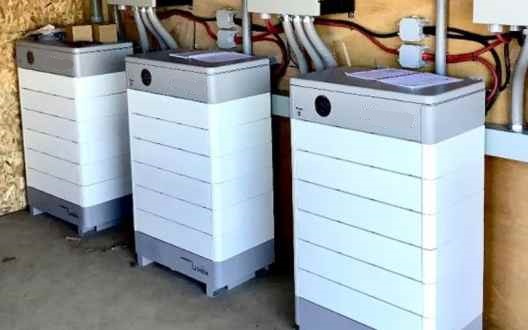
더 깊이 다이빙하십시오: 투자 수익
가치 제안을 살펴 보겠습니다:
- 청구서 감소: 배터리를 사용하면 "태양 자체 소비"를 최대화 할 수 있습니다." 과도한 태양 광 발전을 그리드에 판매하는 대신, 당신은 그것을 저장하고 전기가 가장 비싼 경우 직접 사용합니다.. 이 직접 오프셋은 태양 광 및 배터리 투자에 대한 수익을 보는 가장 빠른 방법입니다..
- 백업 전원: 정전 비용은 얼마입니까?? 가족을 위해, 그것은 버릇없는 음식을 의미 할 수 있습니다, 조명이 없습니다, 그리고 인터넷이 없습니다. 집에서 일하는 사람을 위해, 그것은 생산성 상실을 의미합니다. 배터리는 완벽하게 제공됩니다, 조용한, 그리고 그리드가 실패하는 순간 자동 전력.
- 확장성: 이것은 쌓을 수있는 디자인의 독특한 이점입니다. 당신은 엄청난 것을 살 필요가 없습니다, 오늘날 대형 시스템. 10kWh 시스템으로 시작할 수 있습니다, 나중에 전기 자동차를 구입하거나 에어컨을 설치하는 경우, 전문가가 다른 5kWh 또는 10kWh 모듈을 추가 할 수 있습니다.. 이를 통해 에너지 저장에 더 쉽게 접근 할 수 있고 적응할 수 있습니다.
GYCX 태양 이야기: "서울의 고객은 큰 배터리 비용에 대해 주저했습니다.. 스타터 10kWh 스택 가능한 시스템을 설치했습니다. 1 년 후, 그들은 EV를 샀다. 업그레이드는 간단하고 비용 효율적이었습니다-우리는 기존 설정에 두 번째 10kWh 모듈을 추가했습니다.. 그들은 유연성을 좋아했습니다."
무엇입니까 80 20 리튬 배터리 규칙?
당신은 그 말을 들었을 것입니다 "80/20 규칙1" 전화 나 랩톱을 충전하고 대형 홈 배터리에 적용되는지 궁금합니다.. 이 규칙은 무엇입니까?, 그리고 당신에게 중요합니다 배터리의 건강2?
"80/20 규칙," 더 정확하게 전화를 걸었습니다 "20-80 규칙," 일부 유형의 리튬 이온 배터리의 사이클 수명을 최대화하기위한 지침입니다.. 그것은 매일 사용하기 위해 그것을 제안합니다, 배터리의 충전 상태를 유지해야합니다. ~ 사이 20% 그리고 80%. 가득 찬 극단을 피합니다 100% 충전과 깊은 0% 방전은 배터리의 스트레스를 줄이고 더 오래 지속될 수 있습니다..
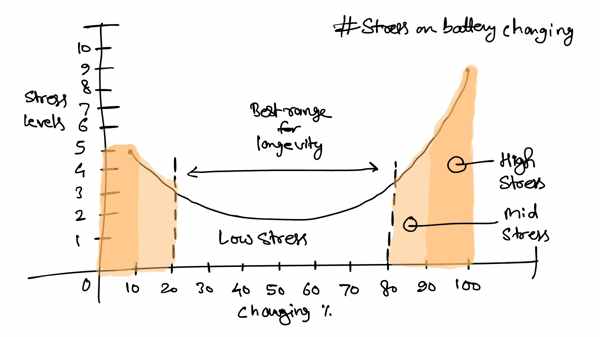
더 깊이 다이빙하십시오: 배터리 수명을위한 모범 사례
다음은 규칙을 자세히 살펴보고 그것이 어떻게 적용되는지에 대한 자세한 내용입니다. 쌓을 수 있는 가정용 배터리:
- 그것이 작동하는 이유: 리튬 이온 배터리는 전압이 매우 높거나 매우 낮을 때 가장 화학적 및 기계적 스트레스를 경험합니다., 거의 가득 차 있거나 거의 비어있는 것과 일치합니다. "스위트 스팟에서 작동합니다" 가운데에는 내부 구성 요소가 더 부드럽습니다, 전체 수명이 길어집니다.
- LFP가 필요합니까?? 이 규칙은 NMC와 같은 화학에 가장 중요합니다, 소비자 전자 제품에서 일반적입니다. 그만큼 LFP (리튬 철 포스페이트) 최고의 홈 배터리 시스템에 사용되는 화학은 훨씬 더 강력하고 청구되는 것이 허용됩니다. 100%. 하지만, 얕은 사이클이 더 깊은 사이클보다 스트레스가 적다는 근본적인 원리는 여전히 사실입니다..
- 현대 시스템을 처리하는 방법: 좋은 소식은 수동으로 관리 할 필요가 없다는 것입니다.! GYCX Solar의 최신 BES를 사용하면 이러한 제한 사항을 시스템 소프트웨어로 직접 프로그래밍 할 수 있습니다.. 일반적이고 매우 효과적인 설정은입니다:
- 백업 준비금을 설정하십시오: 시스템을 알 수 있습니다, "아래에서 배출하지 마십시오 20% 정상적인 일일 사용 중; 저장하십시오 20% 정전." 이것은 자동으로 깊은 일일 배출을 방지하고 항상 파워 리저브를 보장합니다..
- 그런 다음 시스템은 예비 수준 사이를 순환합니다 (예를 들어, 20%) 그리고 100% 매일, 내구성있는 LFP 배터리에 대해 완벽하고 안전하고 정상입니다.. 이것은 당신에게 두 세계의 최고를 제공합니다: 태양 에너지의 최대 사용 및 보호 된 백업 준비금, 배터리의 길고 건강한 삶을 홍보하는 동안.
10kWh 배터리는 가정 에너지 저장을위한 강력한 출발점입니다., 그러나 그 진정한 잠재력은 모듈 식으로 잠금 해제됩니다, 쌓을 수 있는 가정용 배터리 체계. 이 접근법은 시스템을 완벽하게 크기로 크기를 조정할 수있는 유연성을 제공합니다., 오래 지속되는 LFP 기술의 보안, 그리고 미래 방지 투자의 가치. The와 같은 모범 사례를 이해함으로써 20-80 규칙3, 당신은 당신의 시스템이 앞으로 몇 년 동안 당신에게 안정적으로 서비스를 제공 할 수 있습니다..
집을위한 배터리 크기 조정에 대해 더 많은 질문이 있거나 확장 가능한 시스템의 이점을 탐색하려면, GYCX Solar의 전문가 팀이 여기에 있습니다.. 전문 상담을 보려면 저희에게 연락하십시오!
